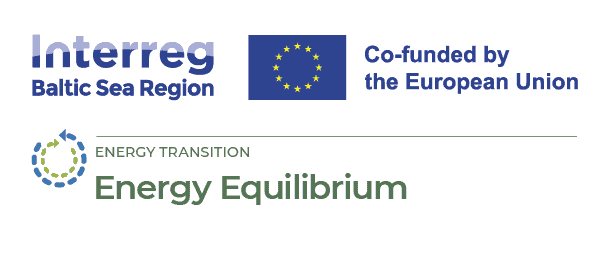
Advancing research beyond the Energy Equilibrium modelling platform
07 October 2025
The Energy Equilibrium project is not only focused on developing an advanced modelling platform to support municipalities in their energy transition. A key part of the project is scientific research, which provides the foundation for decision-making tools and expands knowledge on how local authorities can drive the shift towards sustainable energy systems. During the project, three scientific papers were published, each offering unique insights into municipal energy transition challenges and solutions.
- What Drives Energy Storage Deployment in Local Energy Transitions? (2024)
The first paper addresses one of the most pressing challenges in local energy transitions – energy storage deployment. Using Fuzzy Cognitive Mapping, the study analyses how different stakeholders perceive the drivers and barriers of storage integration. The results highlight the complexity of aligning perspectives among municipalities, energy providers, policymakers, and citizens. Understanding these dynamics is key for designing effective policies that accelerate storage adoption and, in turn, support renewable energy deployment. [1]
2. Energy Transition Reality Check: Are Municipalities Meeting the Mark? (2024)
The second article introduces a composite index for benchmarking municipal progress in energy transition. By assessing five Baltic Sea Region municipalities – all Energy Equilibrium partners – the study evaluates energy efficiency, decarbonisation, and smart energy system deployment. The findings reveal that while municipalities are central to the EU’s climate neutrality goals, they face significant barriers in efficiency, renewable integration, and innovation uptake. The index provides a valuable tool for identifying local strengths and weaknesses, enabling more targeted sustainability strategies. [2]
3. Modeling Energy Transition in Baltic Municipalities (2025)
The most recent publication focuses on the developed and piloted system dynamics modelling platform that allows municipalities to simulate different energy transition scenarios. Applied in six Baltic municipalities, the platform explores strategies for renewable integration, energy storage, and building renovation. The study demonstrates that no single solution fits all, but scenario modelling can guide municipalities in reducing emissions and ensuring a stable, cost-effective energy supply. [3]
Together, these three publications reflect the project’s dual mission: to deliver the practical modelling tool while also advancing scientific understanding of how local energy transitions can succeed. They not only strengthen the Energy Equilibrium platform but also provide municipalities, policymakers, and researchers with knowledge to accelerate the shift toward a sustainable, climate-neutral future.
References
[1] Dolge, K., Grāvelsiņš, A., Vičmane, L. K., Blumberga, A., & Blumberga, D. (2024). What Drives Energy Storage Deployment in Local Energy Transitions? Stakeholders’ Perspective. Smart Energy, 15, Article 100146. https://doi.org/10.1016/j.segy.2024.100146
[2] Dolge, K., Vicmane, L. K., Bohvalovs, G., & Blumberga, D. (2024). Energy Transition Reality Check: Are Municipalities Meeting the Mark? Environmental and Climate Technologies, 28(1), 394–408. https://doi.org/10.2478/rtuect-2024-0031
[3] Lauka, D., Vicmane, L. K., Bohvalovs, G., Dzenajavičienė, E. F., Vītolinš, V., Rošā, M., Cenian, A., & Blumberga, D. (2025). Modeling Energy Transition in Baltic Municipalities. Environmental and Climate Technologies, 29(1), 641–657. https://doi.org/10.2478/rtuect-2025-0044
This article was prepared and published by Laura Kristiāna Vičmane.
© Photo by Thomas Richter on Unsplash





